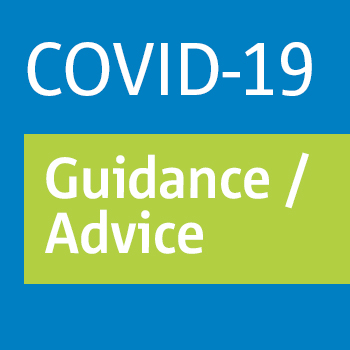
Since December 2019 an outbreak of a new type of coronavirus was identified in the province of Hubei, China. Since that time the evolution of the outbreak was very rapidly spreading to most of the countries worldwide. Consequently the outbreak was declared by the World Health Organisation (WHO) as a public health emergency of international concern (PHEIC) on the 30th of January and further characterised as a pandemic on the 11th of March. Since mid-February a cluster was identified in the province of Lombardy, in the north of Italy. Afterwards a rapid development was seen which affected all the European Member States.
In this context EASA has developed, issued and updated a Safety Information Bulletin to provide operational recommendations for the European stakeholders in accordance with the official communications of WHO and European Centre for Disease Prevention and Control (ECDC) as well as facilitating access to guidance developed by other stakeholders (e.g. IATA, ACI, EU Healthy Gateways, etc.).
On the 13th of March, EASA in addition issued two Safety Directives (SD) one for the EASA Member States and the other for the ‘third country operators’ performing commercial air transport of passengers into, within or out of the territory subject to the provisions of the Treaty on European Union. The SDs mandate the disinfection of aircraft arriving from the high risk areas, as defined and updated in Annex 1 to the SD in collaboration with the Member States, in order to protect the passengers against secondary contamination, and equip the aircraft with one or more Universal Precaution Kits (UPK’s). During the consultation of the SD as well as after the publication EASA received several questions on protection of crew members and in particular quarantine management for crew members operating in high risk areas.
On the 20th of March EASA issued ‘Interim guidance on Aircraft Cleaning and Disinfection’, to provide support to its stakeholders in terms of how the cleaning and disinfections are expected to be performed in the context of the above mentioned SDs, by referring to publications of the WHO (Guide to Hygiene and Sanitation in Aviation, 2009) (Operational considerations for managing COVID-19 cases or outbreak in aviation, 2020) and ECDC ( ECDC - Baka, Agoritsa; Cenciarelli, Orlando, 2020) so that proper and appropriate consideration could be given to Aircraft Cleaning and Disinfection.
Several operators (cargo and passenger transport) reported to EASA that their crew members had been placed in quarantine for 14 days after a short stopover in areas considered as high risk by the national public health authorities although they did not leave the aircraft during the respective stopover. Consequently, EASA issued additional guidance on the 26th of March to provide guidance on the preventive measures that operators should implement in order to demonstrate to the national public health authorities in their Member State or other States that action has been taken to minimize the epidemiological risks. This to avoid having their crews being quarantined by the public health authorities during stopover/layovers or on return from areas with high epidemiological risk.
In this context the European Commission also issued on 26th of March guidelines on: Facilitating Air Cargo Operations during COVID-19 outbreak (European Commission, 2020), which includes a number of operational measures for the Member States to facilitate air cargo transport.
In this guidance, EASA will provide further details regarding measures recommended for helicopter operators and competent authorities (CAs) regarding helicopter operations, and in particular those operators that operate in the frontline of managing the COVID-19 outbreak throughout the EU, and not limited to operations to airports located in affected areas with high risk of transmission of the CoViD-19 infection, as defined in the Annex to the Safety Directive as published on the EASA website.
This guide should be considered by the CAs and helicopter operators in synergy with the recommendations of WHO, ECDC and national public health authorities in regard to the management of contacts, suspected and confirmed cases.
Please note that this guide should be seen as guidance material and examples of good practices to be implemented to the extent possible, by the operators that do not have a procedure agreed with their national public health authorities and it is in no way binding to any operator or Member State.
At all times the decision of the national public health authorities will prevail in regard to the recommendations made in this guide.